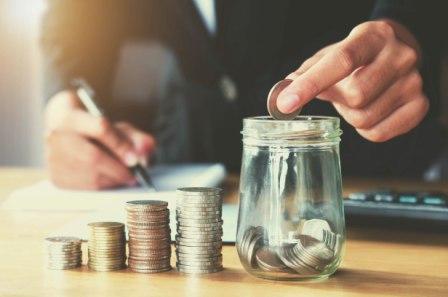A recent McKinsey Global Institute report expects a strong consumer demand rebound once the pandemic ends. The optimism is based on the fact that savings shot up during the pandemic and there was no increase in consumer debt. These findings are based on a study of US, UK, Germany, France and China. India was not included in this study.
Nevertheless, there is evidence that household savings in India also increased similarly. The March 2021 RBI Bulletin states that household financial savings in India shot up to 21 percent of GDP in the first quarter of 2020-21 after having averaged at 7.2 percent in 2018-19 and 8.2 percent in 2019-20. RBI also states that the rate came down to 10.4 percent in the second quarter of 2020-21. Compared to earlier levels household savings were quite elevated in the first half of 2020-21.
The expectation is that when mobility restrictions are removed, households of these economies will be in a strong position to spend. With vaccination underway, such a scenario is not too far.
The McKinsey study expects the recovery to be uneven, particularly in the US where while the higher-income households have been financially sound, the lower-income households have suffered job and income losses.
How would India’s recovery in consumer spending be? India’s savings rate doubled during the lockdown, much like USA’s and UK’s savings rate. This gives India a good chance to recover like them. But, like the US, India also has a large lower-income base that has lost jobs and incomes. This could hurt the recovery process.
Besides the savings-build-up, consumer sentiments will play an important role in determining the recovery path. In this respect, the US is better poised than India, for a smart recovery.
The Index of Consumer Sentiments for the US economy fell by 11.8 percent in March 2020 and then by 19.4 percent in April. These are big falls. They reflect the impact of the pandemic on American consumers. In comparison, the Indian Index of Consumer Sentiments fell by 7.9 percent in March and then by a massive 52.8 percent in April 2020. The lockdown was far more severe in India and this shows in consumer sentiments.
US consumer sentiments have recovered much of the fall. The index in March 2021 was 4.7 percent lower than its year-ago level. But, it was 12 percent lower than its average level during the year before the pandemic hit American consumer sentiments (i.e. April 2019 through March 2020).
The Indian consumer sentiments index in March 2021 was 41.9 percent lower than it was a year ago and it was 46.8 percent lower than its average level during April 2019-March 2020. This is much worse than the recovery of sentiments in the US.
It may be worth noting that the consumer sentiments indices for both, the US and India are based on the same methodology. In 2015, under a Memorandum of Understanding, CMIE adopted the methodology of the Surveys of Consumers of University of Michigan. University of Michigan produces US consumer sentiment indices regularly since the 1950s.
So, while both, US and Indian households saw a doubling of the savings rate, the sentiments recovery is not the same. Perhaps, the strong fiscal support provided by the US to its jobless helped it keep consumer sentiments better protected. India’s help to households in terms of direct transfers has been far more modest.
Government transfers to households during the lockdown were mostly in rural India, in the form of MGNREGA, PM-KISAN, etc. We see the impact of this on the distribution of consumer sentiments which is skewed in favour of rural households. Compared to 2019-20, urban consumer sentiments were down by 51.4 percent while rural consumer sentiments were down by a lower 44.3 percent. The distribution is also skewed in favour of richer households.
It is safe to assume that most of the spike in household savings mentioned by the RBI is in the richer households. So, the recovery in consumer spending in India is likely to be concentrated in the richer households if their sentiments are not too bad. Consumer sentiments data from CMIE’s Consumer Pyramids Household Survey indicates that while all income groups are worse off than they were earlier, richer households are doing better than the rest on the sentiments front. The tipping point seems to households that earn more than a million rupees a year.
Compared to the average in 2019-20, consumer sentiments in March 2021 were down by 46.8 percent. The distribution of this average by household incomes reveals three groupings. First, consumer sentiments of households with annual incomes of less than Rs.400,000 is about 43 percent lower than the index in 2019-20. This is a shade better than the overall average. Second, sentiments of households with incomes between Rs.400,000 and Rs.1,000,000 was about 55 percent lower than in 2019-20. This is the group of households whose sentiments are the worst affected. Consumer sentiments of households with annual incomes in excess of a million rupees were 40 percent lower than the 2019-20 average. These are the least affected households and most likely with the best savings.
India’s revival in consumer spending is therefore likely to be driven by households that earn more than a million rupees a year when the lockdown is lifted.
The article appeared in Business Standard.

